
Tea is more than just a beverage; it’s a cultural phenomenon that has profoundly shaped societies, economies, and rituals across the globe. Understanding the history of tea means exploring a mosaic of stories, traditions, and innovations that date back millennia. Join us on a journey from ancient tea ceremonies to the bustling global tea trade.
The Origins of Tea: Myths and Realities
The origins of tea are steeped in both legend and documented history. According to Chinese mythology, tea was discovered in 2737 BCE by Emperor Shen Nong when leaves from a wild tea tree blew into his pot of boiling water. While this tale might be apocryphal, archeological evidence suggests that tea leaves were consumed in China over 6,000 years ago.
Tea’s early association with medicinal properties is well-documented. Ancient texts praise tea for its ability to refresh the spirit, aid digestion, and improve focus. As early as the Zhou Dynasty (1046-256 BCE), tea was being cultivated and consumed by the elites.
Tea Ceremonies: A Celebration of Tradition
Across Asia, tea ceremonies have evolved into sophisticated rituals epitomizing hospitality and respect. In China, the Gongfu tea ceremony showcases devotion to the precise art of tea-making. Carefully selected leaves, specific temperatures, and repeated steepings highlight the harmony between the human spirit and nature.
Japan’s Chanoyu, or the Way of Tea, further underscores the spiritual aspect of tea. Developed around the principles of Harmony, Respect, Purity, and Tranquility, it extends beyond a simple drink to a full cultural pursuit involving architecture, art, and philosophy.
Tea’s Path to Global Influence
Tea’s journey from a localized Chinese tradition to a global staple is a story of exploration and exploitation. By the 9th century, Japanese monks had introduced tea to Japan, leading to its adoption by the samurai and imperial court. The Tang Dynasty’s Silk Road facilitated the widespread exchange of goods, with tea becoming a luxurious commodity.
However, it was the European Age of Exploration that catapulted tea to international prominence. Portuguese and Dutch traders began importing tea to Europe in the 16th century, where it quickly became popular among the aristocracy. By the 18th century, the British East India Company monopolized tea trading with China, setting the stage for events like the Boston Tea Party of 1773, which underscored tea’s pivotal role in political and economic controversies.
Modern Tea Commerce: Innovations and Sustainability
Today, the global tea industry is a multibillion-dollar enterprise. Innovations in tea cultivation and processing have increased variety and accessibility. Countries like India, Kenya, and Sri Lanka are now central to the world’s tea production, challenging China’s historical dominance.
With the industry’s growth comes responsibility. Sustainable farming practices and fair trade initiatives are increasingly important as consumers become more conscious of the ecological and social impacts of their tea consumption. Ethical sourcing and eco-friendly practices are now key factors influencing modern tea commerce.
The Cultural Legacy of Tea
From the tranquil confines of a Japanese tea house to the buzzing aisles of a modern tea market, tea’s impact is undeniable. It bridges cultures and centuries, providing not only a delightful sensory experience but also a rich tapestry of traditions and stories shared across the world.
In conclusion, tracing the history of tea is as invigorating as the beverage itself. It is a testament to the human capacity for discovery, adaptation, and appreciation, a history still unfolding with every cup.
Tea is more than just a beverage; it’s a cultural phenomenon that has profoundly shaped societies, economies, and rituals across the globe. Tea’s journey from a localized Chinese tradition to a global staple is a story of exploration and exploitation. 


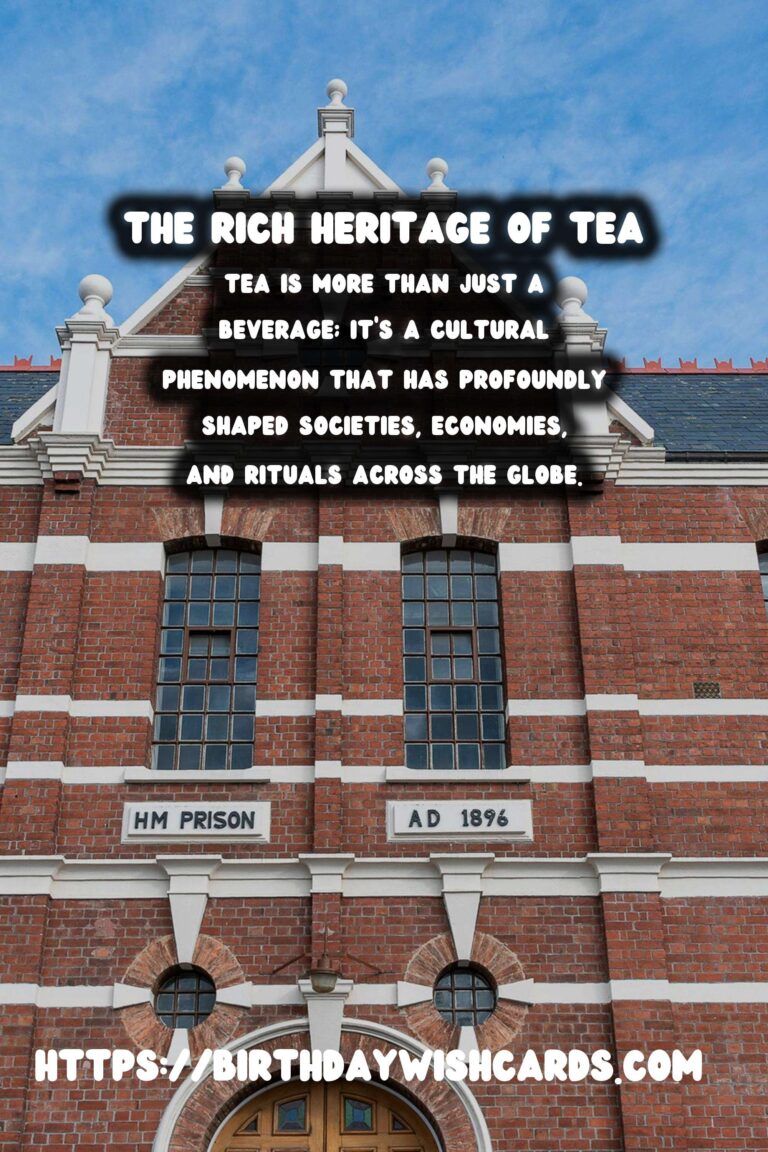
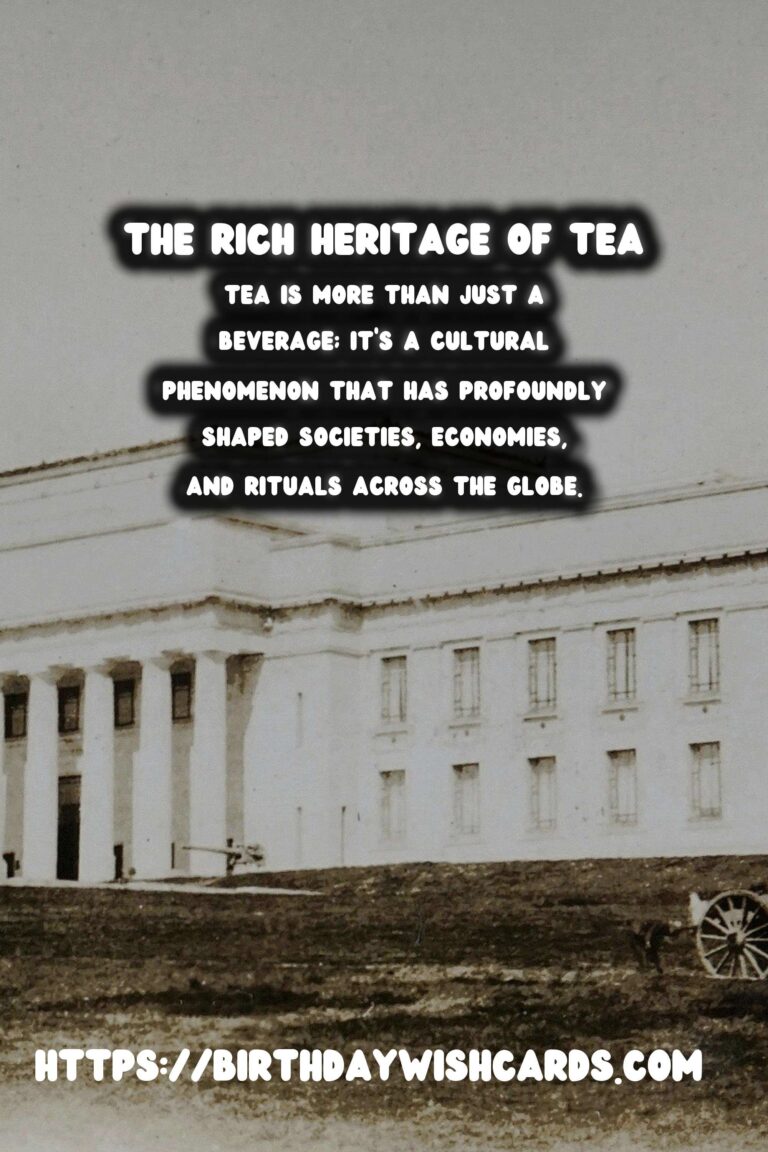
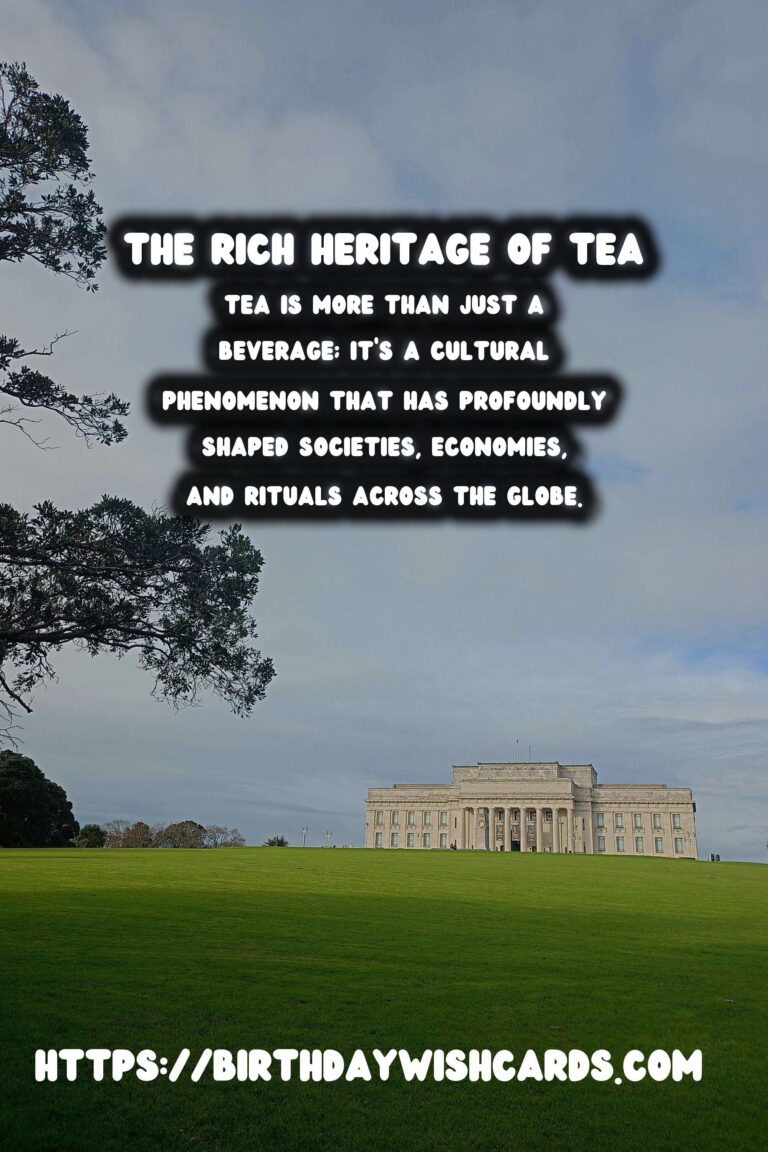

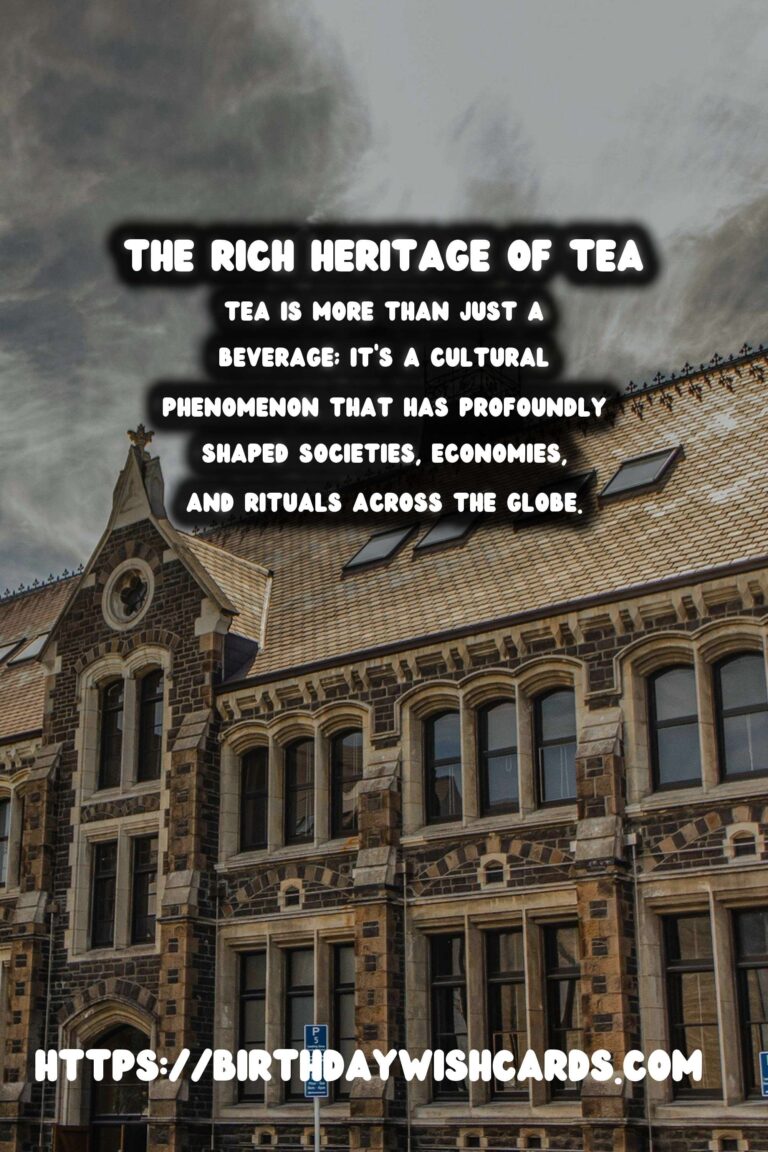
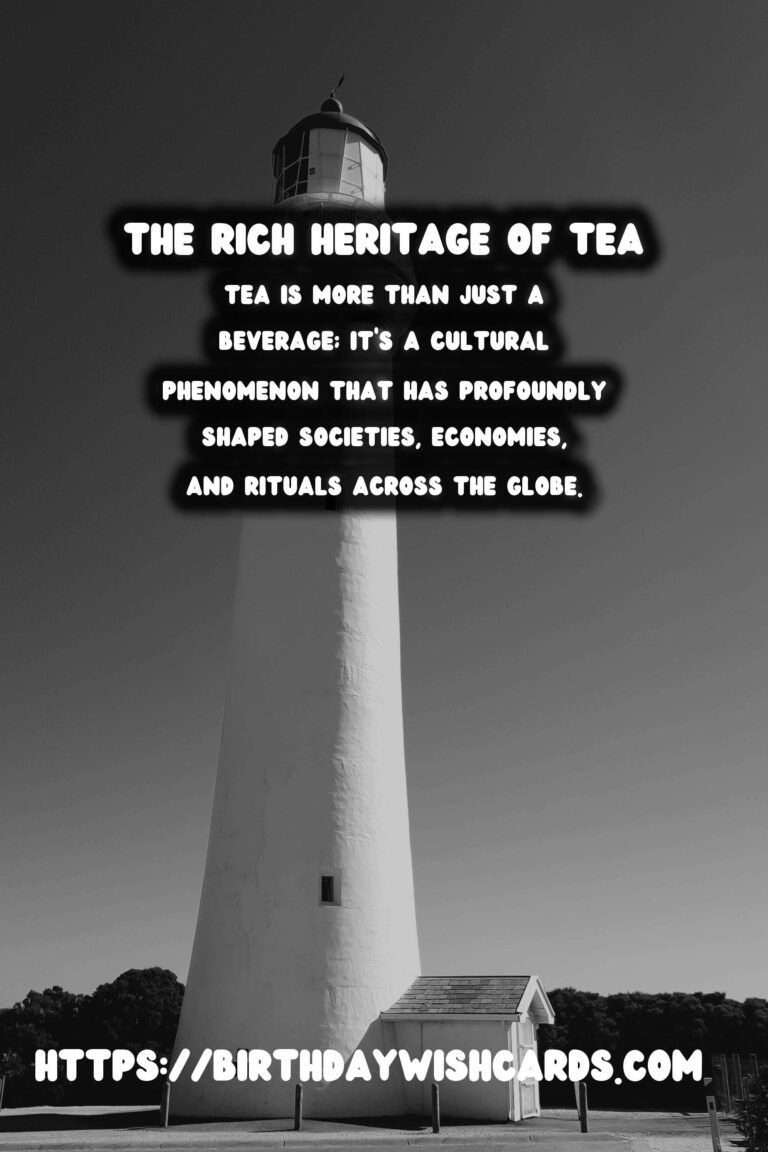
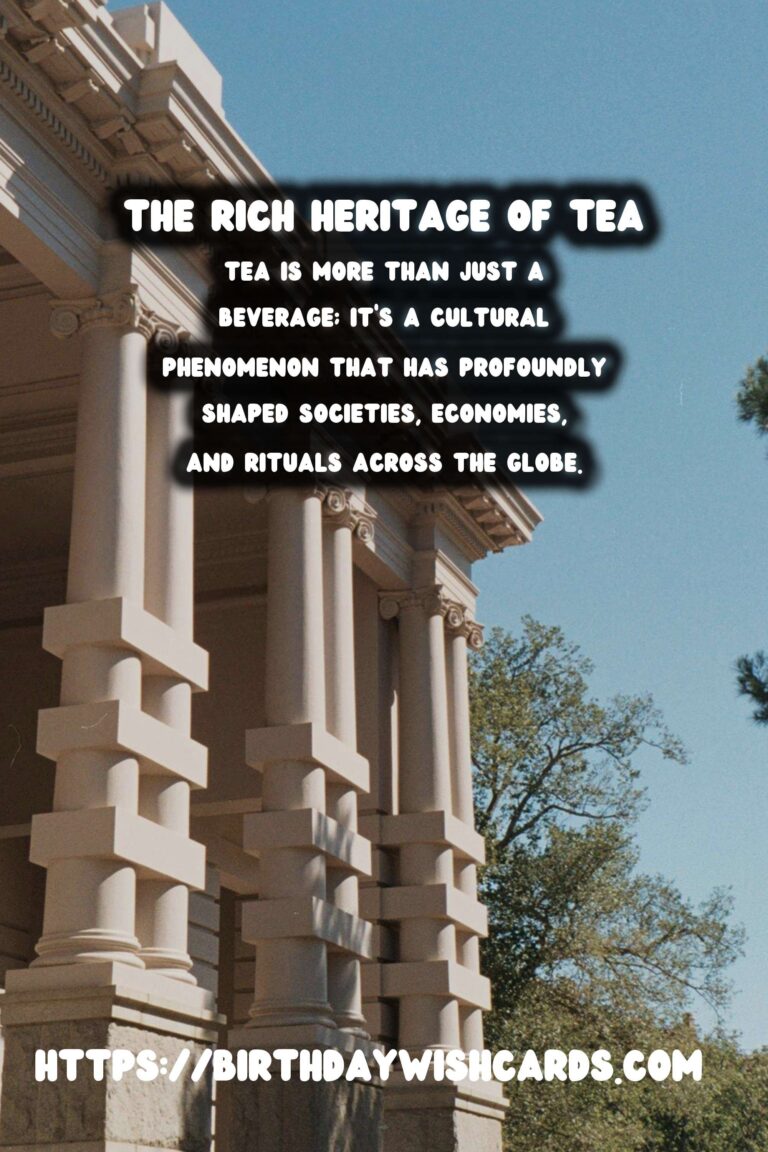
#TeaHistory #CulturalHeritage




